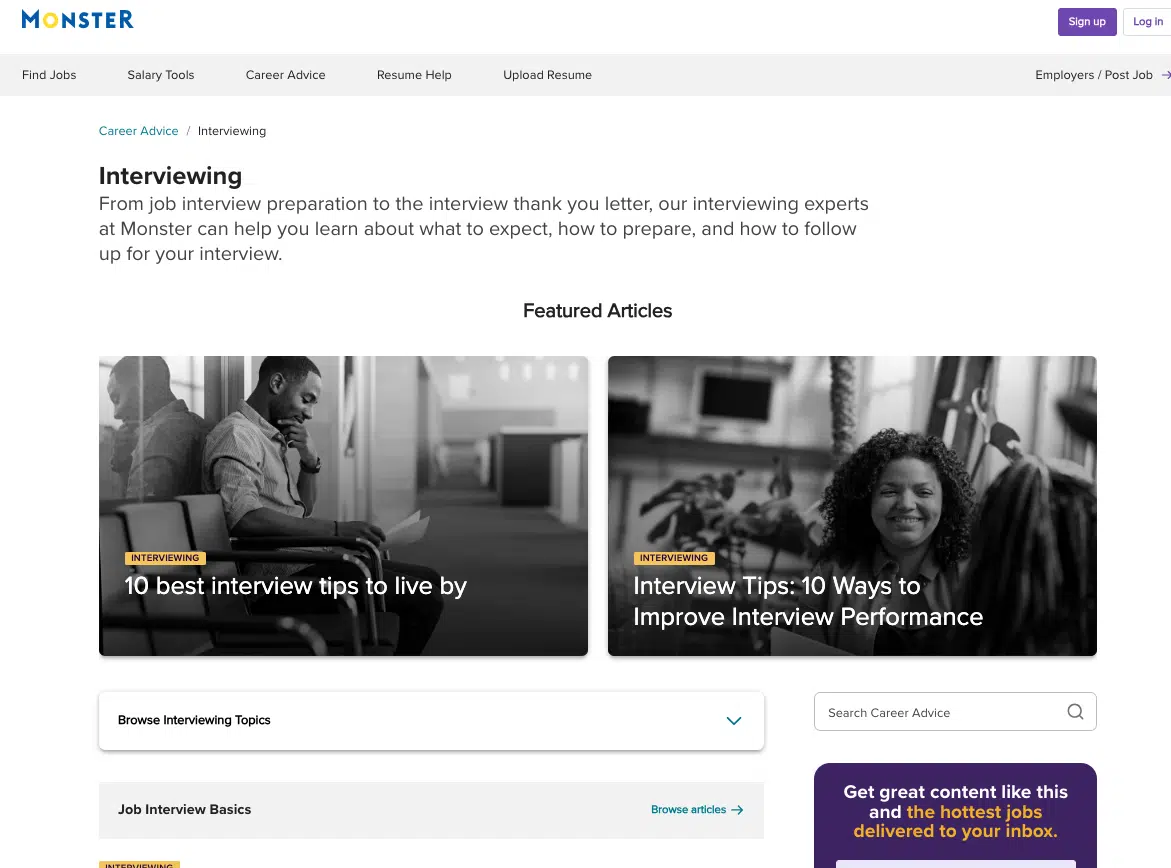How to create, measure and analyze
[ad_1]
As a website’s content grows, its organization and structure often suffer.
Many website owners publish content without a cohesive internal linking or content organization strategy, confusing visitors and search engines.
This disorganized approach hampers the user experience and makes it difficult for search engines to understand and index the content.
But there’s a solution.
You can avoid a messy website by implementing a simple topic cluster structure.
Here’s how embracing topic clusters can elevate your SEO efforts and meet your audience’s needs more effectively.
Why you need to organize content for Google
Part of how Google assesses your content is how they are linked together.
When websites establish smart connections between their content pages, especially those with similar subject matter, they can gain recognition as authoritative sources.
To achieve content authoritativeness, you can use topic clusters, or content clusters, which are a highly effective method of organizing, structuring and interlinking your website’s content.
Dig deeper: An SEO guide to understanding E-E-A-T
Understanding topic clusters for SEO
Topic clusters offer a strategic way to organize and structure your content, providing valuable information to your target audience.
Sometimes called content siloing, this approach involves creating a central main content page (pillar page) and connecting it with related subtopic pages through strategic linking.
It results in a more organized website with a smoother user experience and improved search engine visibility.
With topic clusters, you can build a network of interconnected content that showcases your expertise and authority in a specific subject.
This grouping of related content helps search engines grasp context and relevance, enhancing organic search visibility and increasing website traffic.
To organize your content into topic clusters:
- Begin with a pillar page or cornerstone content as the central topic.
- From there, develop blogs or additional content pages covering related subtopics that can naturally link back to the pillar content.
Topic clusters vs. traditional keyword-based SEO strategies
The topic cluster strategy shifts the focus from individual keywords to comprehensive topics while prioritizing user intent and experience through strategic internal linking.
Instead of targeting specific keywords, the topic cluster approach centers on creating comprehensive content around a core topic.
This involves having a central pillar page covering the main topic, which is then linked to related subtopic content.
This way, search engines like Google can better understand the context and relevance of your content beyond just singular keywords.
Unlike keyword-based SEO, the topic cluster strategy takes a more user-centric approach – providing valuable and comprehensive content that satisfies user intent and answers their questions.
By creating content that addresses both the main topic and its subtopics, you can:
- Offer a better user experience.
- Establish authority.
- Encourage longer visit durations.
All of which can positively impact your SEO rankings.
The anatomy of a topic cluster
A topic cluster has three main components:
- Pillar content.
- Cluster content.
- An internal linking strategy.
Pillar content
- Pillar content should cover a broad topic or theme and provide a comprehensive overview of the subject.
Cluster content
- Cluster content delves into specific subtopics or aspects of the pillar content topic, providing more detailed information and linking back to the pillar content.
Internal linking strategy
- This is arguably the most important aspect of your topic cluster. Each piece of cluster content should link back to the pillar content, and the pillar content should link back to each relevant piece of cluster content.
- This internal linking structure helps search engines discover and navigate your content more effectively. It also signals to search engines that your website provides in-depth coverage of a particular topic, enhancing overall SEO visibility.
Examples of an effective topic cluster strategy
Let’s explore how a topic cluster strategy might work for “Digital Marketing”:
- Pillar content
- Start with a comprehensive article or guide covering all aspects of “digital marketing.”
- Include key strategies and channels like:
- Social media.
- Content marketing.
- SEO.
- Paid media.
- Email marketing.
- Cluster content
- Create more content that delves deeper into specific subtopics.
- For example, write blogs on:
- “Social media marketing strategies.”
- “Mastering SEO techniques.”
- “Effective PPC advertising.”
- “Best email marketing practices.”
- Internal linking
- Connect all subtopic content back to the main “digital marketing” pillar.
- Also, link between the subtopics to reinforce their relevance and strengthen the overall topic cluster.
Using this strategy, you create a network of connected content on digital marketing, helping search engines understand the relationships between your pieces.
Real-life examples of topic clusters
Colgate
Colgate is one of my favorite websites to see a great example of topic clusters in action.
The brand sells oral care products, but its website provides readers with helpful information on oral health, dental conditions and treatments.
They understand that their end purchasers are interested in topics like dental implants, so they have created a topic cluster around it.

The related cluster content spans all areas of dental implants, from “What are Dental Implants?” to “Peri-Implantitis and Protecting Your Dental Implants.”
Each subtopic is thoughtfully linked back to the pillar page and to other related pages within the cluster.
Monster
Another example of effective pillar page usage comes from Monster, a website connecting job searchers with available job openings.
Again, recognizing that their target audience might be searching for interview tips, they have created a topic cluster around interviewing.

Creating a strong foundation for SEO topic clusters
Creating a solid foundation for SEO topic clusters involves identifying the pillar content and conducting comprehensive keyword research.
When considering your pillar content topics, ensure they align with your business goals and target persona’s needs.
By selecting broad topics or themes that align with your business goals and target audience’s interests, you lay the groundwork for an effective topic cluster strategy.
Once the pillar content is determined, keyword research remains essential to identify relevant target keywords.
This strategic use of keywords helps search engines understand the main focus of the content.
It also establishes a solid foundation for the subsequent subtopic content pieces that will support your ongoing efforts to grow your topic cluster.
Dig deeper: The trifecta of keyword research strategy: Volume, difficulty, intent
Get the daily newsletter search marketers rely on.
Measuring and analyzing the impact of your topic clusters
To determine if your topic clusters are working effectively and to measure the success of your strategy, you can use various metrics and tools. Here are some key indicators to consider:
Organic search traffic
- Monitor the organic search traffic to the pillar page and the subtopic pages within the topic cluster.
- An increase in organic traffic indicates that your content attracts more visitors through search engines.
Keyword rankings
- Check the rankings of your pillar page and subtopic pages for relevant keywords.
- Improvements in keyword rankings suggest that search engines recognize your content as valuable and relevant.
Time on page and bounce rate
- Analyze visitors’ average time on the pillar page and subtopic pages, along with the bounce rate.
- Higher time on page and lower bounce rates indicate that users find your content engaging and useful.
Internal link click-through rate (CTR)
- Track the CTR of internal links within your topic cluster.
- A higher CTR shows that users are navigating between different pieces of content within the cluster.
Backlinks
- Monitor the number and quality of backlinks your pillar page and subtopic pages receive.
- Quality backlinks from authoritative sources demonstrate that other websites find your content valuable.
Conversion rate
- If your content is designed to drive conversions (e.g., sign-ups, downloads, purchases), make sure to track this metric.
User feedback
- Ask users for their opinions to understand how they perceive your content’s usefulness.
You can use SEO tools and GA4 to track these indicators. Regularly review and analyze the data to improve your topic cluster strategy.
Remember, it may take time to see results, so be patient and consistent in your approach.
Boost your SEO with topic clusters
Topic clusters are an effective SEO strategy that helps websites build authority, improve search rankings, and attract targeted organic traffic by organizing content around specific topics and establishing content-rich topical hubs.
Creating valuable content clusters builds a comprehensive resource hub for your website visitors. This makes it easy for humans and search engine bots to see your website’s extensive knowledge and expertise on a specific topic, starting from the pillar page.
As a result, your site gains better signals, higher search engine rankings, and increased overall authority.
Opinions expressed in this article are those of the guest author and not necessarily Search Engine Land. Staff authors are listed here.
[ad_2]
Source link





